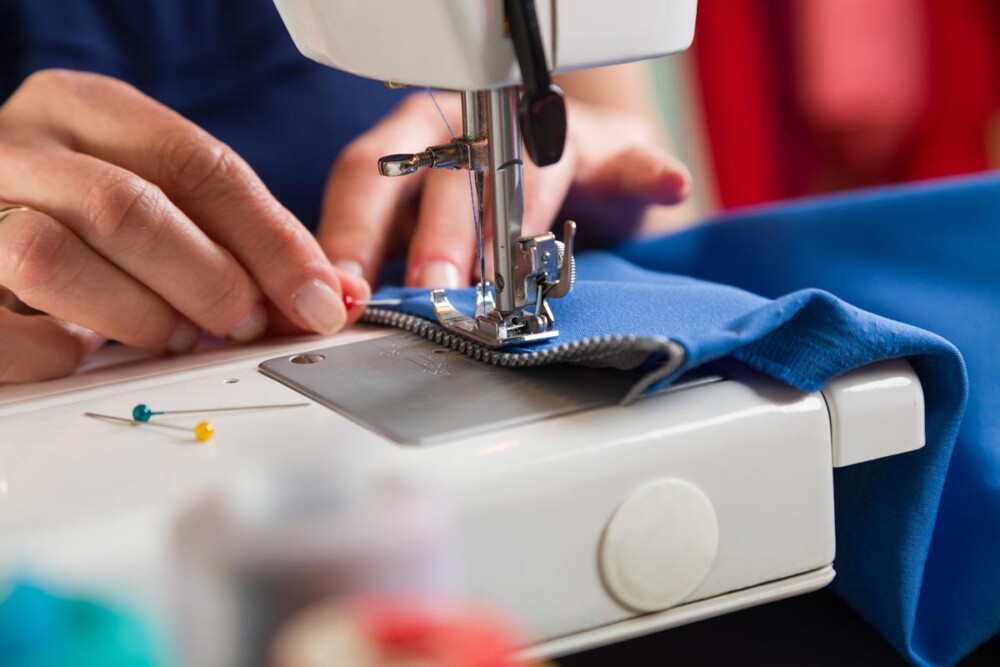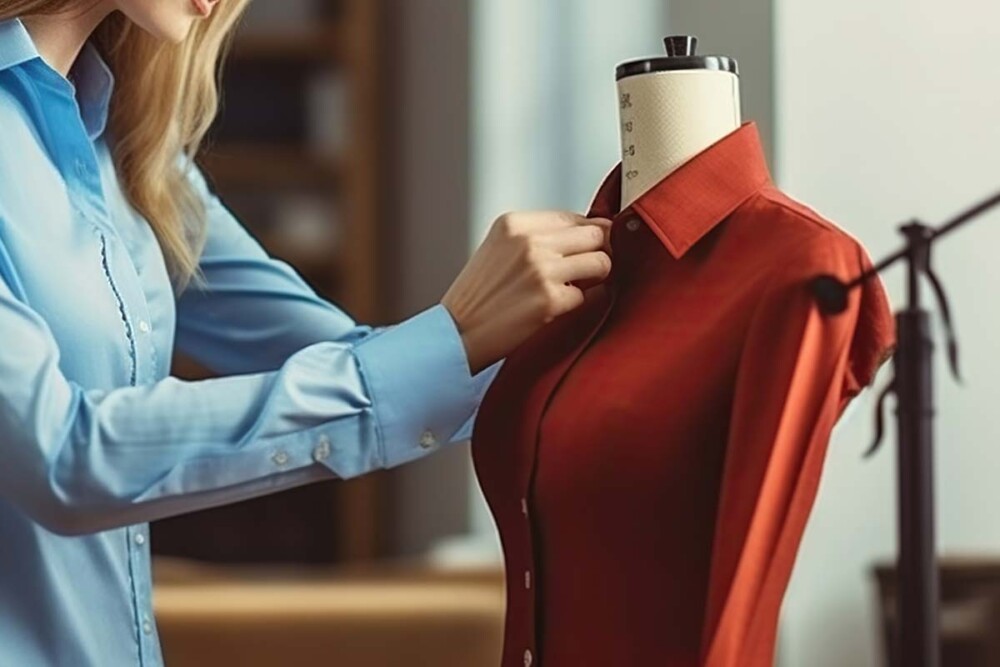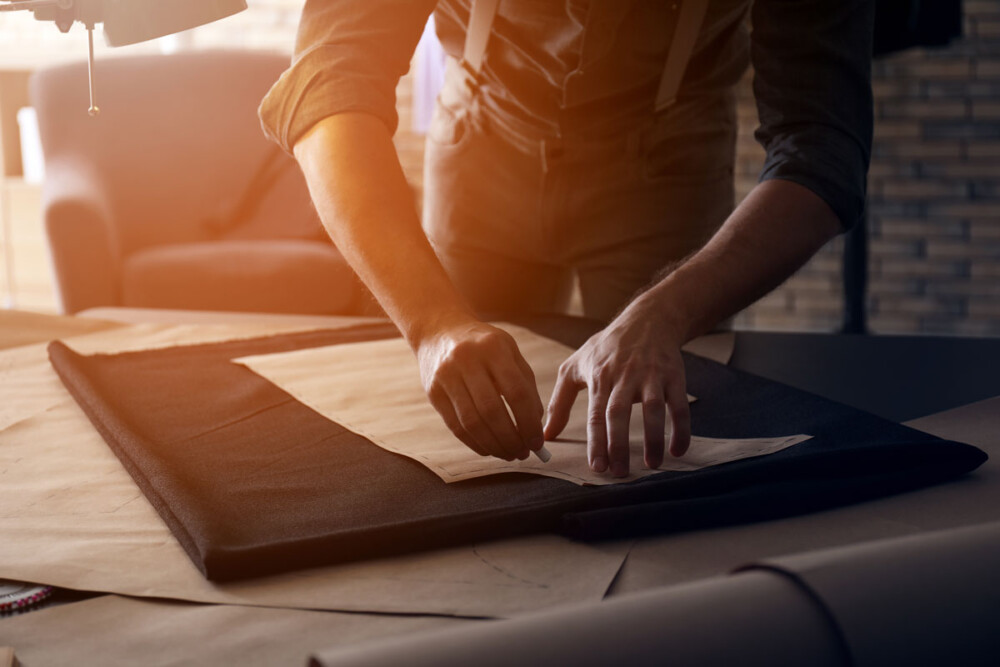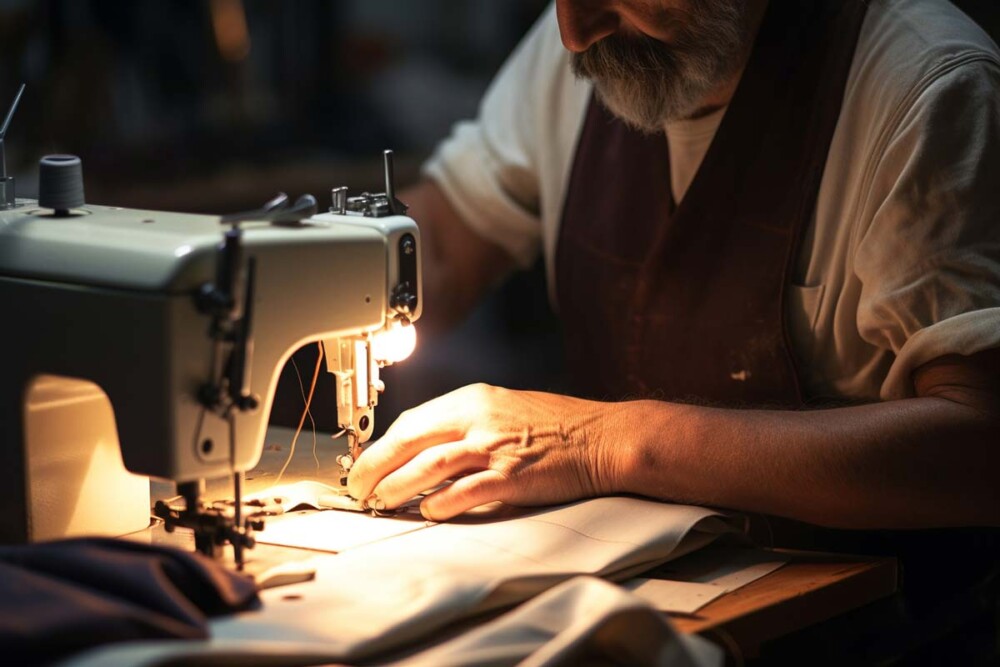In the world of textiles, the importance of interfoders is often underestimated, despite being a fundamental element in the realization of clothing, accessories and household items. This interfoder guide has been designed to help you navigate between the different types of interfoder and their uses, providing you with the necessary knowledge on how to choose the right interface for each project on the vast catalog always updated Manifattura Foderami Cimmino.

Interfoder types: how they are classified
Interfoders are layers of fabric used within clothing, accessories, and other textiles to provide support, shape, structure, and stability. They can be made of different materials, including woven, non-woven, and tricot (knitted) fabrics, and are selected according to the specific needs of the final product.
Interfoders can be applied in a variety of ways, including seam or thermal fusion, and are essential for improving the look, fit and durability of garments. For example, in a dress, the interfoder can be used in the collar, cuffs and belt to maintain the desired shape and add body to the fabric. In accessories, such as bags and hats, the interfoders help to create a more robust and durable structure, as happens by declining the thousand uses of felt.
In summary, interfoders are a crucial component in textile production, used to optimize the performance and aesthetics of a wide range of products.

Interfoders can be classified according to their production method and characteristics. Here are the main types of interface from which you can choose according to the project for which they should be used.
Interlinings woven
The woven interfodes are made with woven threads, similar to traditional fabrics. These interfoders offer great stability and are ideal for garments that require a defined shape. The difference between woven and non-woven interfodes lies mainly in their structure and the way they are produced.
Interfoder nonwovens
Nonwovens are produced by a process that binds the fibers together without the use of yarns. This type of interfoder is generally cheaper and is well suited to projects that do not require a great stability of the tissues.
Intercom Tricot
The tricot interfoders are made with a very fine mesh, offering elasticity and flexibility. They are perfect for elastic fabrics and garments that require a certain freedom of movement.

Use of interfoders: what they are for
The main interfoder functions and uses include:
- Structure and Stability: The interfoders add body and shape to the fabrics, making them easier to work during packaging and helping the finished garment maintain its shape over time.
- Support: Particularly in areas that are subject to more stress or need more stiffness, such as necks and belts, the interfoders provide the necessary support to prevent the tissue from deforming.
- Volume: They can be used to add volume to certain parts of a garment, such as the shoulders in a jacket, to create a specific aesthetic effect.
- Finish and Appearance: They improve the final appearance of the garment, helping to hide seams, upholstery, and other interior elements, as well as providing a smooth and even surface.
- Protection: In some cases, the interfoders can also have specific functions such as thermal protection or water resistance, depending on the material used.
Thanks to these precise characteristics and functions, the interfoders are used in a wide range of sectors.
Intercom for clothing
In clothing, tailoring interfoders are used for fabric reinforcement and fabric stabilization, ensuring that collars, cuffs and belts retain their shape over time.
Interface for accessories
Accessories, such as bags and hats, benefit from the interfoder fabrics to add body and support, improving the quality and strength of the finished product.
Intercom for household linen
Also in household items, such as curtains and tablecloths, interfoders play a crucial role in tissue stabilization, ensuring that they retain their shape and functionality.

How to choose the right intercom
The choice of the right interfoder depends on several factors, including the type of fabric, the method of application and the end use of the product. It is important to consider the weight and flexibility of the fabric with which you work, in addition to the desired characteristics of the finished product.
Choosing the right interface is essential to ensure the quality and functionality of garments and accessories. The proper interfoder provides stability, shape and support, directly affecting the fit, comfort and appearance of the finished product. A wrong choice can compromise the structure and aesthetics, leading to deformation or premature wear.

Techniques for the application of interfoders
Interfoder application techniques vary depending on the type of interfoder and the specific project. Here are the main methodologies:
- Application with Stitching: This technique involves the attachment of the interfoder to the fabric through stitching. It is suitable for non-adhesive interfoder and allows greater flexibility in processing. It requires precision to prevent the interfoder from moving during stitching.
- Hot Melt: The thermoadhesive interfodes are applied using heat and pressure. This method requires an iron or a press to activate the glue present on the interfoder, which melts with the fabric, creating a lasting bond. It is important to select the right temperature to avoid tissue damage.
- Insertion Without Fixing: In some cases, the interface can be inserted between two layers of fabric without being fixed, for example in bags or accessories, where the structure is maintained by the perimeter seam of the pieces.
- Application to Points: For some specific projects, such as in the case of interfodere clothing, the interfoder can be applied in strategic points rather than on the entire surface. This method is useful to provide support only where it is needed, while maintaining the flexibility of the garment.
The choice of application technique depends on the type of interface, the fabric you are working with and the desired effect on the finished product. It is crucial to consider the specific instructions of the interfoder manufacturer for best results.
Interfoders are an essential element in textile production, offering reinforcement , stabilization and tissue fusion .. Whether you are working on an item of clothing, an accessory or a household item, know the interface types, their uses and application techniques. will allow you to choose the most suitable interfoder fabric within the vast catalog of Manifattura Foderami Cimmini. The key to a successful product is the selection ofinterfoder for tailor-made, which will complete and improve your work.



